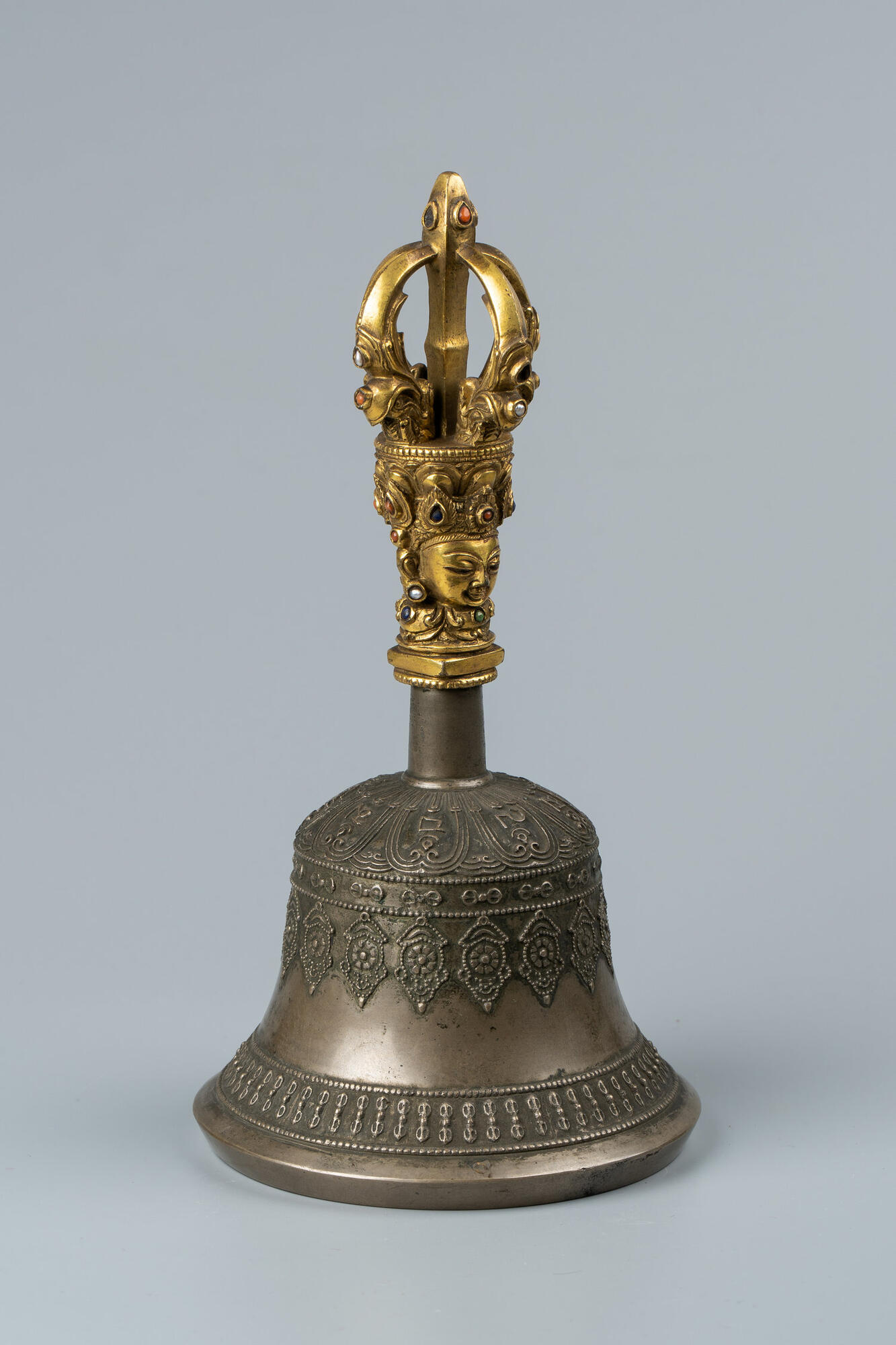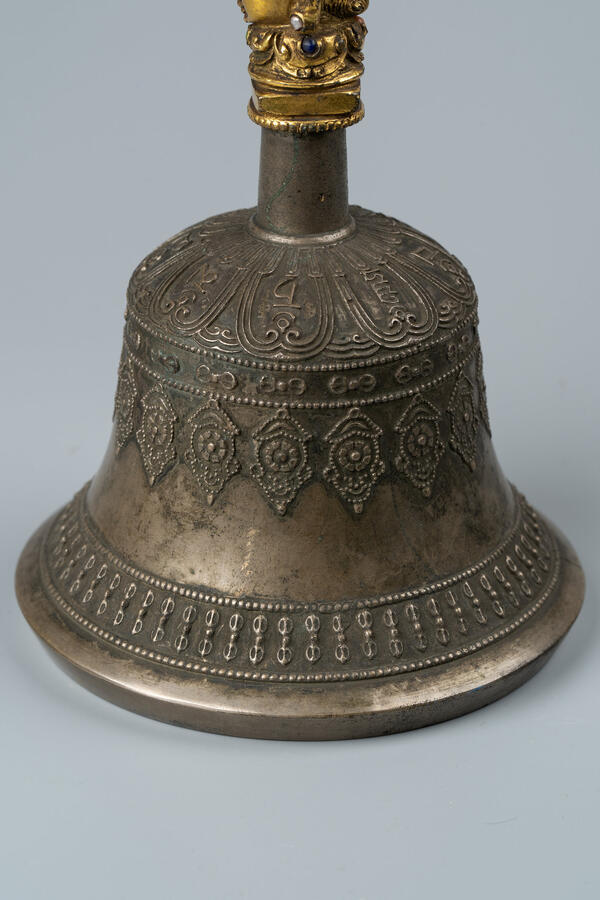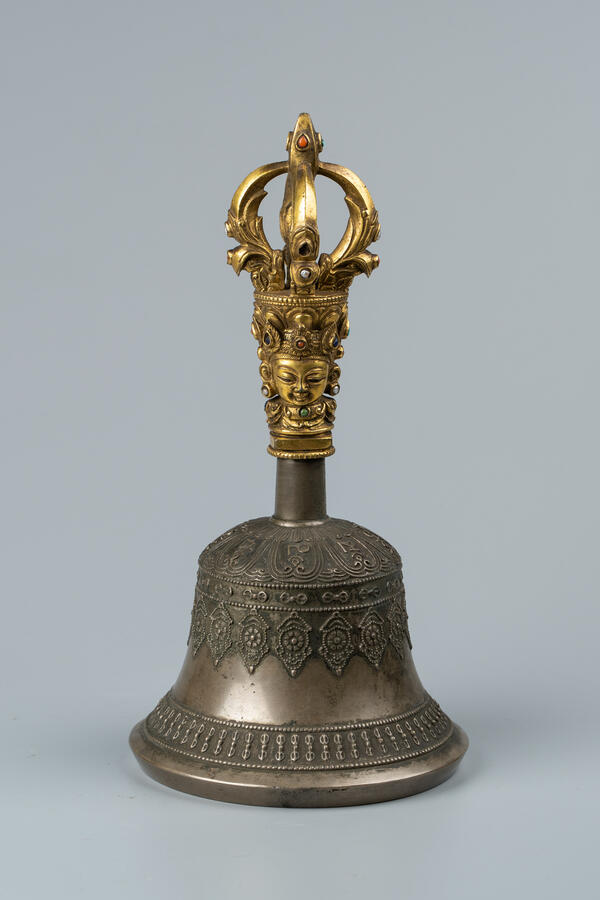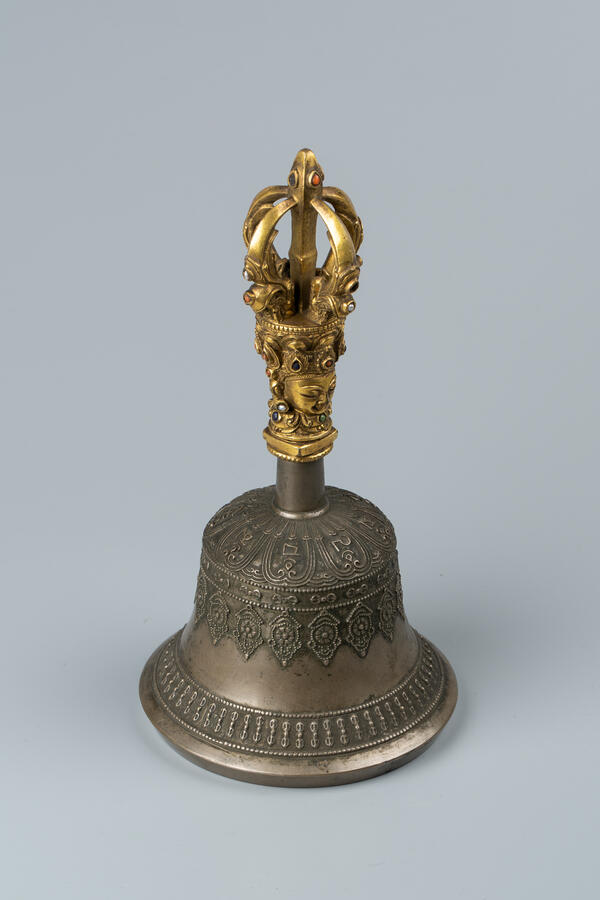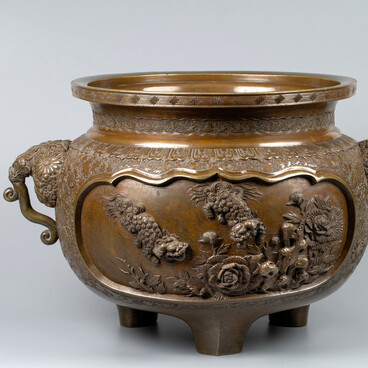The Samara Regional Art Museum displays a number of Buddhist ritual objects, some of which were previously housed in the collection of the Russian orientalist Aleksei Matveevich Pozdneev. One of them is a Tibetan ritual bell.
For a long time, Tibet was a forbidden country, and entry to travelers, tourists and foreigners was strictly prohibited. The isolation from the outside world and the difficult living conditions caused by the harsh climate led to the formation of a unique culture, religion, and traditions. In Tibet, there are many different artifacts and ceremonial objects intended for use in certain religious activities and practices. The most ancient religious objects in almost all cultures are perhaps amulets. They appeared a long time ago when humans were just beginning to realize themselves as a part of a mysterious mystical world. However, in Buddhism and in some other Asian religions, such items still remain an essential feature of everyday life.
In Buddhism, a bell is a female symbol (along with the lotus). Its sound symbolizes the emptiness which is the nature of all phenomena and an aspect of intuitive wisdom. The bell also has a practical use — it is a musical instrument. It is often used with a vajra, a ritual and mythological weapon that in shape resembles a rod, ending with spherical tips at both ends. The spiritual, symbolic meaning of the bell and vajra for a practicing Buddhist is much more important than any utilitarian purpose. These two subjects can be considered as two fundamental principles in Buddhism: the vajra symbolizes the perfection of the method, and together they embody the inseparable union of method and wisdom. The Tibetan bells are usually cast in bronze or in its alloy with other metals (silver, bismuth, copper). The bell itself and its handle are often made separately and subsequently connected. The bell’s handle is made in the form of a half-hajra and is sometimes gilded.
A face is usually depicted on the bell’s handle. The teacher of the Nyingma school of Tibetan Buddhism, Dzogchen Ranyak Patrul Rinpoche said that it is the face of the Buddha Vairochana — one of the five Buddhas of Wisdom in Buddhism.
For a long time, Tibet was a forbidden country, and entry to travelers, tourists and foreigners was strictly prohibited. The isolation from the outside world and the difficult living conditions caused by the harsh climate led to the formation of a unique culture, religion, and traditions. In Tibet, there are many different artifacts and ceremonial objects intended for use in certain religious activities and practices. The most ancient religious objects in almost all cultures are perhaps amulets. They appeared a long time ago when humans were just beginning to realize themselves as a part of a mysterious mystical world. However, in Buddhism and in some other Asian religions, such items still remain an essential feature of everyday life.
In Buddhism, a bell is a female symbol (along with the lotus). Its sound symbolizes the emptiness which is the nature of all phenomena and an aspect of intuitive wisdom. The bell also has a practical use — it is a musical instrument. It is often used with a vajra, a ritual and mythological weapon that in shape resembles a rod, ending with spherical tips at both ends. The spiritual, symbolic meaning of the bell and vajra for a practicing Buddhist is much more important than any utilitarian purpose. These two subjects can be considered as two fundamental principles in Buddhism: the vajra symbolizes the perfection of the method, and together they embody the inseparable union of method and wisdom. The Tibetan bells are usually cast in bronze or in its alloy with other metals (silver, bismuth, copper). The bell itself and its handle are often made separately and subsequently connected. The bell’s handle is made in the form of a half-hajra and is sometimes gilded.
A face is usually depicted on the bell’s handle. The teacher of the Nyingma school of Tibetan Buddhism, Dzogchen Ranyak Patrul Rinpoche said that it is the face of the Buddha Vairochana — one of the five Buddhas of Wisdom in Buddhism.
